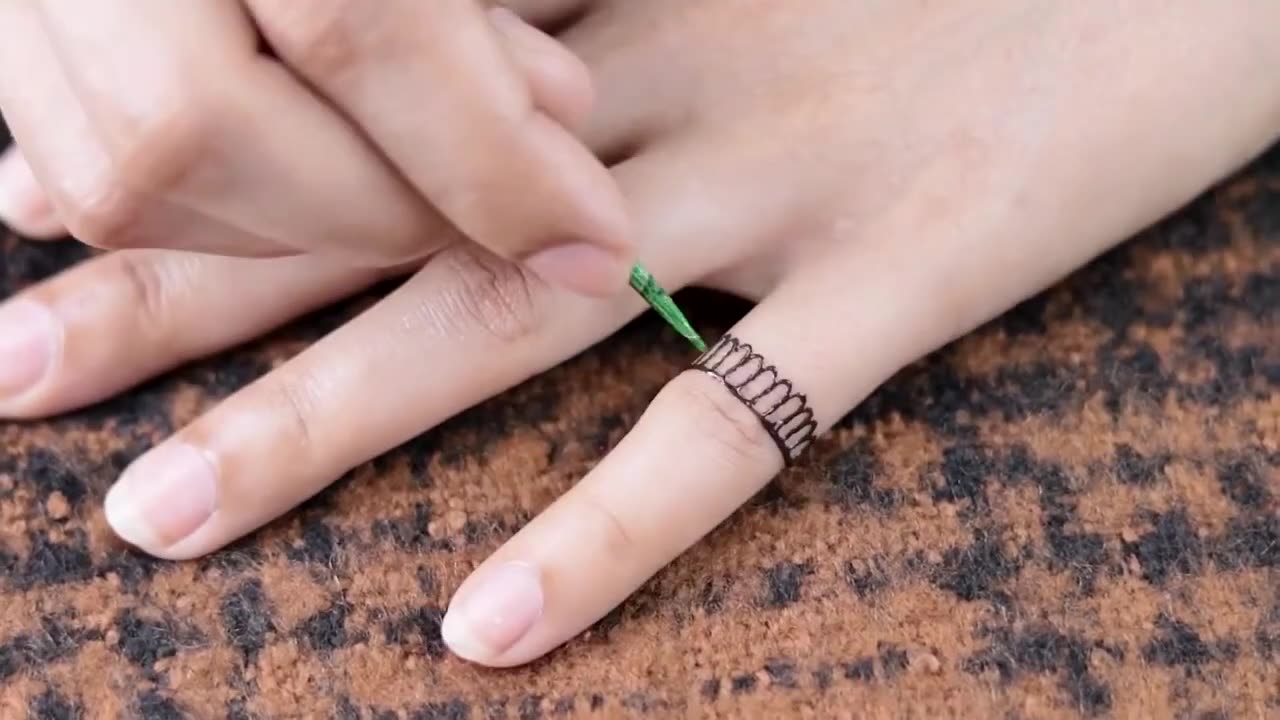Premium Only Content

Top 3 Mehndi design Hand art from the experts | wowvideos
Mehndi is a form of body art and temporary skin decoration originating in ancient India, in which decorative designs are created on a person's body, using a paste, created from the powdered dry leaves of the henna plant (Lawsonia inermis). Dating back to ancient India, mehndi is still a popular form of body art among the women of the Indian subcontinent, Bangladesh, Pakistan, Nepal, the Maldives, Africa and the Middle East. In the late 1990s, mehndi decorations became fashionable in the West, popularized by Indian cinema and entertainment industry, where they are called henna tattoos.
Mehndi is derived from the Sanskrit word mendhikā. The use of mehndi and turmeric is described in the earliest Hindu Vedic ritual books. It was originally used for only women's palms and sometimes for men, but as time progressed, it was more common for men to wear it. Staining oneself with turmeric paste, as well as mehndi, are Vedic customs, intended to be a symbolic representation of the outer and the inner sun. Vedic customs are centered on the idea of "awakening the inner light". Traditional Indian designs are representations of the sun on the palm, which, in this context, is intended to represent the hands and feet. Mehendi has a great significance in performing classical dance like Bharatnatyam.
There are many variations and designs. Women usually apply mehndi designs to their hands and feet, though some, including cancer patients and women with alopecia occasionally decorate their scalps. The standard color of henna is brown, but other design colors such as white, red, black and gold are sometimes employed.
Mehndi in Indian tradition is typically applied during Hindu weddings, Namboodiri weddings and Hindu festivals like Karva Chauth, Vat Purnima, Diwali, Bhai Dooj, Navraathri, Durga Pooja and Teej. Muslims in the Indian subcontinent also apply Mehndi during Muslim weddings, festivals such as Eid-ul-Fitr and Eid-ul-Adha.
In Hindu festivals, many women have Henna applied to their hands and feet and sometimes on the back of their shoulders too, as men have it applied on their arms, legs, back, and chest. For women, it is usually drawn on the palm, back of the hand and on feet, where the design will be clearest due to contrast with the lighter skin on these surfaces, which naturally contain less of the pigment melanin.
Alta, Alata, or Mahur is a red dye used similarly to henna to paint the feet of the brides in some regions of India, for instance in Bengal.
Likely due to the desire for a "tattoo-black" appearance, some people add the synthetic dye p-Phenylenediamine (PPD) to henna to give it a black colour. PPD may cause severe allergic reactions and was voted Allergen of the Year in 2006 by the American Contact Dermatitis Society.
-
 1:17:59
1:17:59
Sarah Westall
13 hours agoDOGE: Crime & Hysteria bringing the Critics & the Fearful - Plus new CDC/Ukraine Crime w/ Dr Fleming
85.6K8 -
 45:39
45:39
Survive History
19 hours ago $10.98 earnedCould You Survive in the Shield Wall at the Battle of Hastings?
81.3K6 -
 1:50:28
1:50:28
TheDozenPodcast
18 hours agoViolence, Abuse, Jail, Reform: Michael Maisey
114K4 -
 23:01
23:01
Mrgunsngear
1 day ago $6.81 earnedWolfpack Armory AW15 MK5 AR-15 Review 🇺🇸
97.2K12 -
 25:59
25:59
TampaAerialMedia
1 day ago $4.58 earnedUpdate ANNA MARIA ISLAND 2025
62.3K4 -
 59:31
59:31
Squaring The Circle, A Randall Carlson Podcast
20 hours ago#039: How Politics & War, Art & Science Shape Our World; A Cultural Commentary From Randall Carlson
47.5K3 -
 13:21
13:21
Misha Petrov
20 hours agoThe CRINGIEST Thing I Have Ever Seen…
39K75 -
 11:45
11:45
BIG NEM
16 hours agoWe Blind Taste Tested the Best Jollof in Toronto 🇳🇬🇬🇭
28.2K1 -
 15:40
15:40
Fit'n Fire
19 hours ago $0.67 earnedArsenal SLR106f & LiteRaider AK Handguard from 1791 Industries
24.1K1 -
 8:34
8:34
Mike Rowe
6 days agoWhat You Didn't Hear At Pete's Confirmation Hearing | The Way I Heard It with Mike Rowe
58.4K23